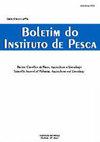TRAFFICKING OF ORNAMENTAL FISH IN THE BRAZILIAN AMAZON
IF 0.6
4区 农林科学
Q4 FISHERIES
引用次数: 1
Abstract
The trafficking of ornamental fish is growing on a yearly basis in the Brazilian Amazon. This represents a serious threat to the biodiversity of the region. The objective of this research was to evaluate the trafficking of ornamental fish in the Brazilian Amazon using data from the seizures by the Federal Police and Brazilian Institute of Environment and Renewable Natural Resources - IBAMA. To assess and quantify this illegal trade, we gathered data relating to the period between January 2003 and January 2020. Information was obtained from IBAMA - Amazon - regional superintendence; National Amazon Research Institute - INPA regarding smuggled species that have been recovered and placed in its fish collection. The results show that in 98 seizures made by IBAMA, a total of 170,849 specimens of at least 73 species of 10 families, and 5 orders were recovered. Most of the illegally trafficked species are from the Loricariidae family (31 species, 8.47%). Hypancistrus zebra (Loricariidae), Potamotrygon jabuti, Potamotrygon leopoldi (Potamotrygonidae), Osteoglossum bicirrhosum and Osteoglossum ferreirai (Osteoglossidae) are the most targeted by the traffickers, due to their high value. At least 12 species are undescribed new species and were registered and placed in INPA’s fish collection. The fish followed different routes to reach the border that Brazil, Colombia, and Peru share. We conclude that in order to fight this illegal trade, tougher laws against smugglers, agreements with neighboring countries to combat trafficking, formal environmental education programs for riverine populations, and further scientific studies of smuggled species are necessary.巴西亚马逊地区观赏鱼的走私
在巴西亚马逊地区,观赏鱼的走私每年都在增长。这对该地区的生物多样性构成了严重威胁。本研究的目的是利用联邦警察和巴西环境和可再生自然资源研究所(IBAMA)缉获的数据,评估巴西亚马逊地区观赏鱼的贩运情况。为了评估和量化这种非法贸易,我们收集了2003年1月至2020年1月期间的数据。信息来自IBAMA -亚马逊-区域监管;国家亚马逊研究所- INPA关于走私物种已经恢复并放置在其鱼类收藏中。结果表明:在98次查获中,共缴获5目10科73种标本170849件;非法贩运种类以蠓科居多(31种,占8.47%)。由于价值高,斑马小狐蝠、贾布小狐蝠、利奥波小狐蝠、双颊小狐蝠和费氏小狐蝠是走私贩的主要目标。至少有12种是未被描述的新物种,已被登记并放置在INPA的鱼类收藏中。这些鱼沿着不同的路线到达巴西、哥伦比亚和秘鲁三国的边界。我们的结论是,为了打击这种非法贸易,有必要对走私者采取更严厉的法律,与邻国达成协议打击贩运,为河流种群提供正式的环境教育计划,并进一步对走私物种进行科学研究。
本文章由计算机程序翻译,如有差异,请以英文原文为准。
求助全文
约1分钟内获得全文
求助全文
来源期刊

Boletim do Instituto de Pesca
FISHERIES-ZOOLOGY
CiteScore
0.80
自引率
0.00%
发文量
24
审稿时长
>12 weeks
期刊介绍:
To publish original articles of research and short communications in the following áreas: Fisheries, Aquaculture, Zootechnology, Limnology, Oceanography, Biology and Pathology of aquatic organisms. The publication depends on the approval of the Editorial Board, based on the peer review.
 求助内容:
求助内容: 应助结果提醒方式:
应助结果提醒方式:


